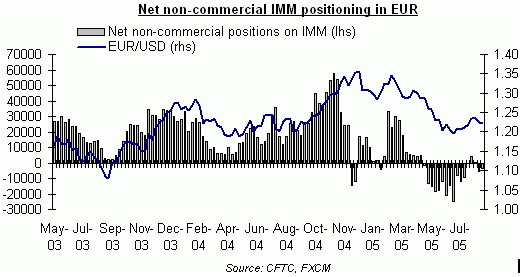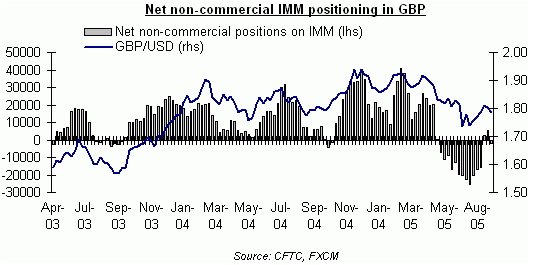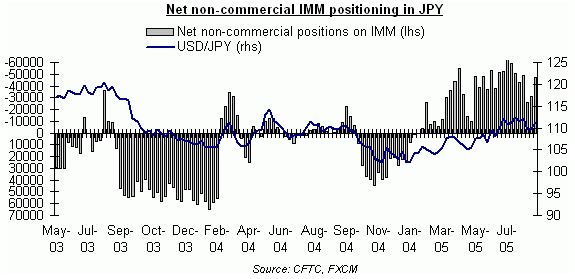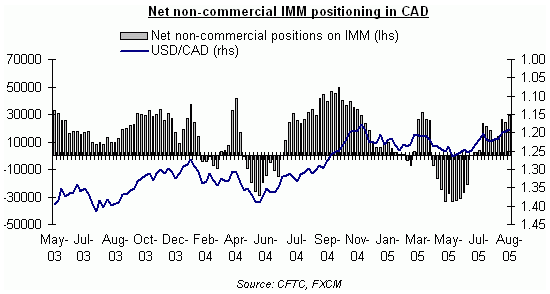Here are the professional traders forex positions
US Dollar Index:
Dollar weakness prevailed after the previous week’s
non-directional bias as traders pared back short positions in the Japanese yen.
Subsequently, long initiatives were taken in the British pound and euro with
both commodity bloc majors remaining relatively unchanged, still favored in
longs. As a result, net implied greenback positioning shifted negative,
suggestive of an overall bearish overtone to the market, falling 2,017 contracts
from the previous rise of 45,592 contracts. Confirming the downside bias looks
to be an overall decline in the U.S. dollar index. Although currently forming a
base, past declines were reflective of the aforementioned notion. As it stands,
open interest is higher at 20,866 while still maintaining a net short position.

EUR:
Switching to a bullish bias, trading interest switched to euro
longs, paring back previously strong bearish undertones. For the week, long
initiatives rose 46 percent from 26,465 contracts to 38,768. Subsequently,
adding to an even stronger case for euro favoritism, traders pared back shorts
to 15,250 contracts, a decline of 49 percent. With that said, euro buying
interest exploded with net non-commercial positioning now at a healthy 23,518
versus a previous short read of 3,619 contracts. This has ultimately shifted the
long to short ratio to 2.5:1 ratio and may be suggestive of a near term
retracement as the market is considerably biased to one side. Underlying spot
looks to confirm the notion after four healthy gaining sessions with open
interest heavy at 161,018.

GBP:
Buying interest regained dominance in the week as traders,
speculating on fundamentals, increased pound positions. As a result, with the
short side lessened by 27 percent to 14,944 contracts traders bid interest on
the buyside, higher by 41 percent to 25,940 versus the previous week’s 18,388
contracts. As a result, pound sterling initiatives additionally turned as in the
euro, flipping to a 10,996 net non-commercial long bias versus a negative 2,211.
With that said, the long to short ratio has also shifted to a healthy 1.73:1
ratio, also suggestive of a near term retracement with the switch being so
strong. The underlying looks to confirm after the past 4-session run up with
open interest rising 2,926 contracts to 80,522.

CHF:
Paring back on long initiatives, overall bearish sentiment
reigned over the Swiss franc for the week. Short side interest grew in the week
to 40,709 contracts, up from 35,884 in the previous week as longs were reduced
by 843 contracts to 3,165. Ultimately, this leaves overall interest net short in
non-commercial positioning, healthy at a negative 37,544 print from a previous
31,876. With the strong selling pressure, the short to long ratio rises to a
strong 12.86:1 ratio, offering suggestions that a near term retracement is in
order as the market looks to be packed to one side. Notably, this is relatively
contrary to fluctuations in the underlying spot as strong interest for the
Swissie was built over the week. Open interest remained relatively unchanged at
67,995, higher by 274 contracts.

JPY:
Short selling slightly abated in the week as traders lessened
their short yen loads. Shorts declined 27 percent to total 40,724 in
non-commercial contracts as the long side rose to 9,358 contracts, up from
7,941. As a result, net positioning, decreases dramatically to 31,366 contracts
from a previously heavy 47,665 contracts. Additionally, short to long ratios
have declined from a sturdy 7:1 ratio to 4.35:1, lending to near term yen
strength suggestions. With open interest slightly lighter at 166,538 contracts,
down 11,707, speculators look to be entering on encouraging fundamental factors
and positioning ahead of the impending elections of the weekend. Underlying spot
movements look encouraging as we approach the 109 bottom channel support.

CAD:
Positioning remained relatively unchanged in the commodity
bloc currency with an incremental take back in longs and a slight rise in shorts
for the week. Bullish interest abated slightly to 41,543 contracts, down from
44,904, with a subsequent rise in selling initiatives to 17,000, higher by 1,010
contracts. This now moves the net non-commercial bias of 28,914 slightly lower
to 24,543 contracts and forces the overall long term ratio from a 2.8:1 to a
more mild 2.4:1 figure. As a result, traders look to be wary of the current
interest in conjunction with the underlying spot as it tests the C$1.1800
support figure, with more focus on the low of C$1.1716. Open interest remains
healthy at 107,851, slightly lower by 3,302 contracts.

AUD:
Much like its commodity bloc comrade, Australian interest
remained relatively unchanged as open interest dipped incrementally by 911
contracts to 60,188. Net non-commercial positioning remained healthy at 11,870
compared to a 10,865 long bias in the previous week. Subsequently, buying
interest rose slightly to 14,661 contracts from 14,142 with short sellers
decreasing positions by 15 percent to 2,791 contracts. As a result, the long to
short ratio rose to a 5.25:1 ratio from a 4.31:1 reading and suggestive of
continued gains in the underlying as commodity spots rise to test highs.
Interestingly enough, the underlying looks to test upside ceilings of its recent
range channel.

Richard
Richard Lee is a Currency Analyst at Forex
Capital Markets. Employing both fundamental models and technical analysis
applications, Richard contributes regularly to DailyFX, Yahoo Finance and Comtex.
Prior to joining the research team, Richard was one of the senior instructors
for the FX Power Course, teaching thousands of traders the basics of currency
trading, technical analysis and how to implement trading strategies. He has
extensive experience in trading the spot currency markets, options and futures.
Richard previously traded FX, equity and equity derivatives for four years as
well as work for a private equity consortium before joining FXCM.
